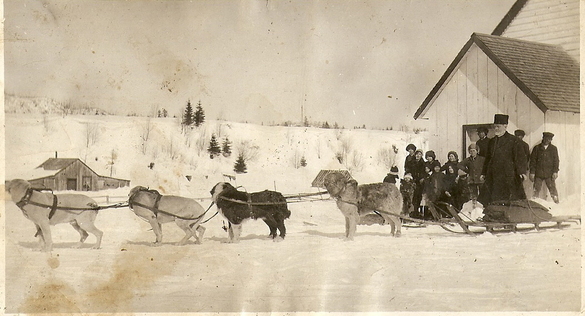Blueberries thrive in the rugged Canadian Shield landscape where for centuries, forest fires were nature’s way of clearing the land and welcoming the emergence of the coveted blueberry bush. Journals and diaries of Canada’s first explorer’s record the practice of the local first nation’s people setting fire to sections of forest in order to encourage berry growth. In 1855, a fire started by native’s burning a blueberry patch near Lady Evelyn Lake, west of Lake Timiskaming, ignited a massive fire which burned over 2000 squares miles of forest and reached as far west as the Michipicoten River Village area on Lake Superior.
In 1921 a forest fire swept through the Magpie River Valley, WaWa City and destroyed all of the buildings at the abandoned Helen Mine. Another forest fire in 1946 was successfully rerouted past the Wawa townsite but burned much of the same terrain along the MagpieRiver north of Wawa Lake.
While most northern forests thrive after a cleansing fire enriches the soil, the natural re-growth of plants was hindered in this region by the sulphur dioxide fumes that blew across the landscape from Algoma Ore Division in Wawa. The sintering operations at Algoma Ore began to process siderite ore in 1939. During the early years high contents of sulphur fumes had a devastating effect on the vegetation growing downwind of the mill. As environmental concerns grew and government legislation became more stringent, sulphur fumes decreased and the boreal forest began to reclaim the barren landscape. Since the closure of operations at AOD in 1998, the re-vegetation process has been noticeably dramatic.
Despite the blue fume clouds that once floated across the valley, avid blueberry pickers would hitch a ride on the ACR on Sunday’s when the plant was shut down, or when the wind was blowing in a more favourable direction. The Algoma Central Railway line criss-crossed through the blueberry fields from 1912 until the early 2000’s when the rails and ties were removed. The first section of track in this area was constructed from Michipicoten Harbourand the Wawa Station to Hawk Junction. This rail line was at one time a vital link for Wawa residents to the outside world. It carried everything from ore, pulpwood and fuel, to newborn babies, the
Eaton’s catalogue and the Christmas Turkey.
Siderite Junction (or “Four Corners”) was the cross point of the main railway line to Hawk Junction with the sideline which ran into the Sir James Open Pit Mine. Constructed in 1958 this railway bed was in operation until shortly after the mine shut down in 1967. The abandoned railway beds now make for a reliable and scenic access road for berry pickers, cyclists and snowmachines alike.
Access to Wawa’s famous blueberry patch from the west carries berry pickers across the Steephill Falls Dam operated by Brookfield Renewable Power Inc. For those who are observant, you can still see the remains of the first hydro-electric generating station built on the Magpie River in 1913 to supply power to the Magpie Mine 20 kms north. This flat-slab buttress dam was abandoned in 1927 but remains as one of the only examples of early hydro dam construction of this design in Canada. In 1978 it was used as a Hollywoodbackdrop for the movie Rituals starring Hal Holbrook.
In 2002 the Magpie River Terraces Conservation Reserve was created along the Magpie to recognize and protect a series of some of the best preserved lake and river terraces found along the Lake Superiorshoreline. These unique geological formations were created by the dropping lake levels in the Lake Superior Basinafter the recession of the Wisconsin Glacier 10,000 years ago.
Whether you call it the blueberry patch, the fume kill, the treeless zone, or the Magpie River Terraces Conservation Reservation, everybody knows that Wawa’s “secret”blueberry picking grounds are a unique asset to the rich natural and cultural heritage of the Northern Algoma region.

 RSS Feed
RSS Feed
